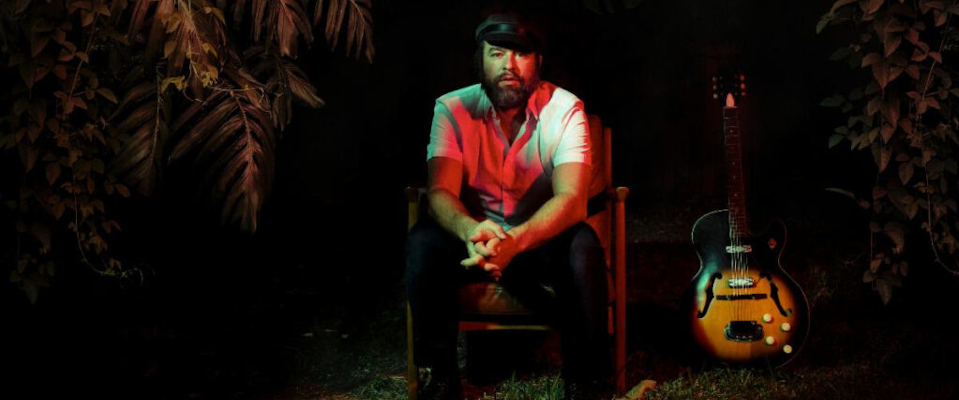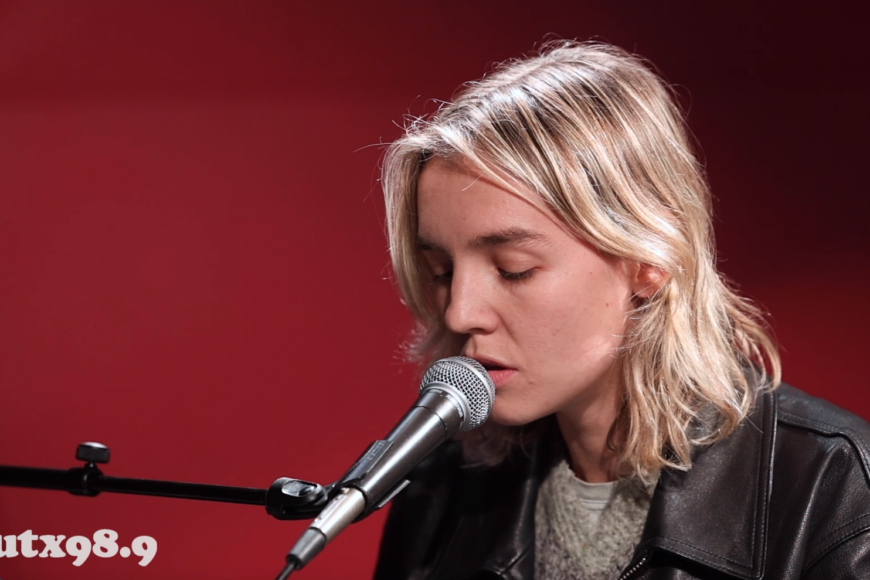The Amazing, Everlovin’ Career of John L. Hanson, Jr.
(Celebrate the 500th episode of Old School Happy Feet Dance Party with John E. Dee at The Highball on August 26th, 7p – 11p. INFO HERE)
By Jeff McCord
“NINE EIGHT NINE!”
The door separating the KUTX control room from the open office area is solid metal. Heavy. Thick. Most announcers like to crank the control room monitors, but with the door closed, it’s hospital quiet. No sound escapes. Except one.
“OLD SCHOOL!”
In the final years of my hosting “Left Of The Dial” on Friday nights, waiting around in the office before the show, I didn’t have to watch the clock to know when it was time for me to go on. Culminating a nonstop set of vintage, high-energy soul and R&B, the unamplified human voice of John E. Dee would cut through the metal door like it was butter. At top volume, John would launch into his nonsensical closing monologue, shouting over the strains of George Duke’s remake of “TSOP” (the theme to ‘Soul Train’).
“Welllll, Sugah Woogah, if that didn’t get it – You know, it can’t get gotten! You’ve been diggin’ the doin’ of the brown-eyed soul servant for your everlovin’ deservant!”
John E. Dee
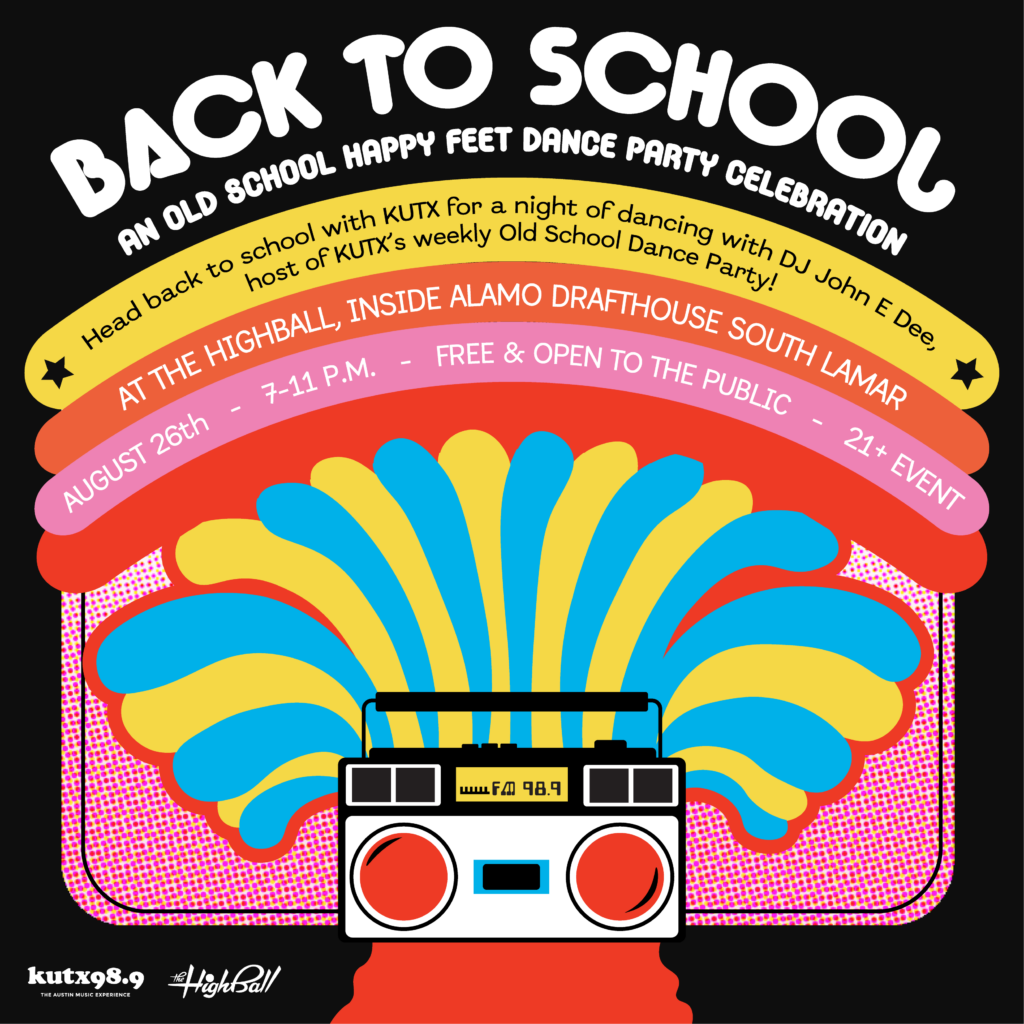
John E. Dee’s program, “Old School Dance Party”, which airs on Fridays from 4-7 pm CT, just celebrated its landmark 500th episode. To mark the occasion, on Saturday, August 26th, “Back to School: An Old School Happy Feet Dance Party Celebration” will take place from 7-11 pm at the Highball on South Lamar. John E. Dee will be on hand to DJ, and the event is free and open to the (adult) public.
The Old School Dance Party is an exuberant three hours of 60s, 70s and 80s soul classics that launched on KUTX’s first week on air. For those sneaking out of work early hoping to get a jump on their weekend, it has proven to be the perfect soundtrack.
But if you’re new to Austin, or even if you’re one of the younger KUTX staffers that watches this older guy arrive from Dallas every weekend to host this peculiar time warp of a program, no one would blame you for wondering, “Just who is this guy?”
To understand that, you need to go back, way back, to Detroit in the early 60s. John L. Hanson, Jr. (John E. Dee’s real name, and yes, KUT listeners, the same John L. Hanson Jr. that hosts the syndicated program In Black America – more on that in a bit) grew up in a rich musical atmosphere.
“Motown was getting its feet wet,” John remembers. “Most of the emerging artists went to Motown. There was also a record company called Golden World, which had the Dramatics. They were in the neighborhood. I can remember the first time I attended the Motown Revue. Every year Motown put on this week-long extravaganza. All the artists on Motown gathered at the Fox, for a show starting at ten in the morning through that evening. You could watch six or seven artists for roughly, I think it was less than $5.”
“My father was also a semiprofessional musician, so music was everywhere. There was R&B and [also] rock and roll, country and western. I got a good infusion of those genres because, on Sundays, most of the R&B stations played gospel. You either listened to gospel all day Sunday or you listened to something else. Something else was either rock and roll on CKLW (an Ontario clear channel AM Station), or country and Western coming out of one of the suburbs in Detroit. It was a great time for music, locally and nationally. Music was everywhere. We always had the radio on in our kitchen. We went to bed with music. We woke up with music, we ate breakfast with music, ate dinner with music. Music was a part of the fabric in our house all day, every day.”
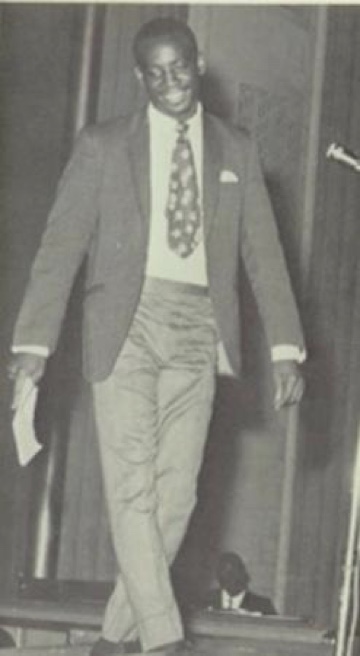
With this background, you would guess a young John Hanson would play music himself. He did play the trumpet in his school marching band and got pretty good at it, but let it fall to the wayside, a move he now regrets. Instead, John fixated on music as a fan, and on the medium delivering it to his door – radio. He was known among his friends for his spot-on imitations of the flamboyant local DJs.
“At our high school, there was a talent show, The show had been going on for at least a decade, maybe longer. Every year, they had a talent show, and in ‘66 and ‘67, I was one of the emcees.”
John is smiling broadly as he recalls this. “Another friend of mine who went into radio, Larry Brandy, and I were [both] vying to be the emcee, and Mr. Kaminski, the drama teacher, didn’t want to make a choice. So he had both of us be the emcee. There was so much talent that you couldn’t come out after each act. I ended up writing a poem for every three acts. A gentleman in the audience was the program director at a local radio station. And after the talent show, he came up and asked if I had ever considered being a disc jockey. I said, ‘No, not until now’. At that time, [the station was] in the process of having a teen reporter reporting on high school sports and activities at high schools around Detroit. I was one of the first ones to do that. Following me, after I went off to college, was Donnie Simpson, who is now with Video Soul. So that’s how I got into radio. I had a part-time position playing records on the afternoon radio show, during the summer. I was 16, going on 17. I did it about a year and a half. I was going to stay in Detroit because I was in a position to have a full-time radio job, but my parents weren’t going for it. Said no, no, no, no. You are going to college!”
In addition to radio, John was an athlete in high school, playing various sports.
“I dabbled in athletics. That was one of the reasons I got to Texas. I was in a track meet, [just] prior to the ‘67 riot in Detroit. A coach on one of the other teams had gone to school with Dr. John King at (Austin’s) Huston-Tillotson University – at the time, Houston-Tilllotson College. He asked if I had considered going to college in Texas. The only thing I knew about Texas was horses, and that’s about it. I figured everybody rode horses. He said he could give me a scholarship, which was music to my ears. I had semi-committed to going to Olivet College in Ann Arbor, Michigan. But I was tired of the snow. It was, go to school where it snows in the winter, or go to Texas.”
John no doubt exaggerates his lack of Texas knowledge, but he does remember arriving unprepared.
“I got down here in the summer of 1968. I didn’t understand the weather down here. I got off the airplane in Dallas, when they didn’t have jetways. You actually exited onto the tarmac. It was 97 degrees and I had a 100% wool sweater on. I almost fell out.”
It wasn’t a smooth transition. Soon after arriving, John would aggravate an old knee injury, and find himself sidelined in the hospital for an extended stay. Once this speed bump was behind him, though, the culture shock was not as great as you might expect.
“It was somewhat different. But one has to understand that at Huston-Tillotson, you’re more or less in a cocoon. It was in East Austin, which was a predominantly African-American community at the time. We just kind of sheltered.”
It would take him a while to encounter the region’s racism.
“One time we [went] to a movie downtown, I think the State Theater, and they said we had to sit in the balcony. That was a shock, that set me back. But it was the time we went to Jackson, Mississippi for a track meet that I would actually run into racism face to face. It was overt, hitting you in the face. Here in Austin, because we didn’t have transportation at the time, I didn’t really run into [it].”
The atmosphere was so cloistered that at one point, John says, the student body filed a complaint.
“That was a rebellious year. 1967-68. 99.9% of all the colleges boycotted against something. The war, bad food, no air conditioning. We boycotted because there was a lack of activities on campus. So they allowed us to do a mini dance every Friday and Saturday night. I used to come in because everyone knew I had the talent to play records.”
There it was. Despite working on a degree in accounting and economics, despite his parents’ admonitions that he would never make a living as a broadcaster, the DJ inside John had not gone away. He just couldn’t find anyone to pay him for it. Aside from a brief temporary stint at KOKE, he couldn’t find a local station to hire him. He had applied at KUT on four separate years but had never gotten past the UT employment office.
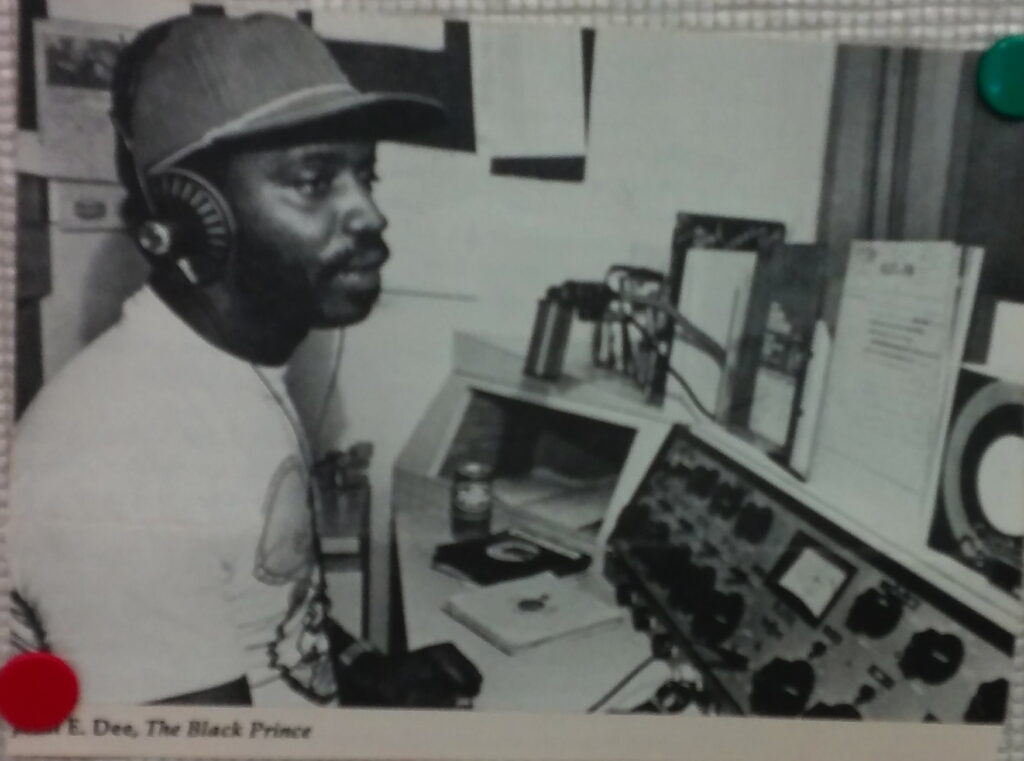
Finally, he heard of a station in Lockhart looking for an afternoon DJ. In order to get hired, John would need to find a sponsor for his program. He succeeded in enlisting a local record store. The station, KHRB, 1050 AM, had a signal that barely reached Austin. They signed off at sundown, so the hours of John’s afternoon shifts varied widely. The gas getting there and back ate up what little they were paying him. They had no R&B record library. None of this deterred him.
“Basically the only upside is that I was on the radio. I kept the skill set up. Since the record store was the sponsor, I got records from [them] because [the station] had no collection. By and large, there was nobody that played R&B music in Lockhart before I got there. Of course, they had some James Brown. Everybody had James Brown nearby, but anything outside of that, you were on your own.”
John spun records there throughout 1972, until, needing more income, he took a job at Austin’s Human Opportunities Corporation.
“In the seventies, they were a part of the War on Poverty program. They had these daycare centers all across Austin, and I was the property control manager. I was in charge of making sure all the daycare centers had whatever equipment they needed. Every Monday we distributed foodstuff, milk, bread, and whatever they were going to fix that week. I ended up delivering that product around the city.”
It was around this time that a friend of John’s passed on some information he heard announced on KUT – they were looking for an announcer.
“I’d been applying to KUT for four years in a row and I had basically given up. I wasn’t going to go back down here to go through the circus again. So I just kept putting [my friend] Mike off. To get him off my back, I went down for the fifth time and applied, and that fifth time was the charm. Now I’m hired.”
What changed was a former UT student by the name of Jew Don Boney. Boney – who has since gone on to become a lecturer, an activist, and a fixture in Houston politics – was, back then, one of only a handful of Blacks in Austin media.
“He came to KUT and suggested they needed to up their game,” John remembers.
Boney hosted an R&B program and a new syndicated interview program, In Black America. When Boney stepped away from one program and then the other, it created opportunities for John.
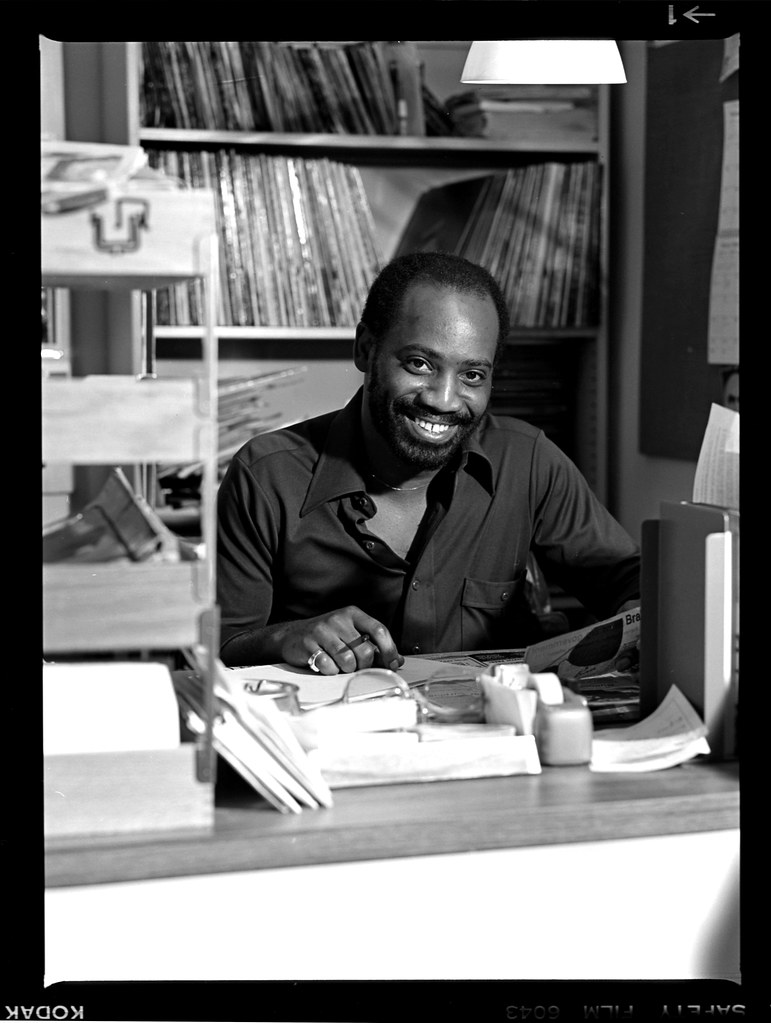
John began his KUT career as a part-time DJ, hosting a program he called Soul On FM, airing nightly from 11 pm to 2 am (in those days, KUT signed off at 2 am). Soul On FM was a free-wheeling three hours of R&B imbued with John’s over-the-top mannerisms. And it wasn’t just music.
John explains. “KUT was also part of the Mutual Broadcasting Network. Mutual had an African-American subsidiary called Mutual Black. It was news, sports, it had a soap opera, Bittersweet. It had history and it had commentary. I intermingled all that in 3 hours every night, five nights a week.”
But John still had his job at the Human Opportunities Corporation, where he was expected each morning at 8 am. Coming in later and later, push eventually gave way to shove. And John had no doubt where he wanted to be. He wasn’t sure of the impact Soul On FM was creating, but he knew he wanted to keep at it.
“Some of us, particularly me, don’t really see the impact that we may have on a particular audience. Between ‘72 and early ‘74, prior to us going actually stereo, Austin shut down. All the bars closed at midnight, so you had a captive audience. We sit in these rooms by ourselves and we hope people are listening.”
They were. John convinced KUT management to bring him on full-time, and soon, in addition to hosting his program, he was running the board each night for All Things Considered, leaving the station for three hours to return for Soul On FM. He also ran a taped classical music program (hosted by John Aielli) Sunday mornings at 6 am. It was full-time work, but the varied hours were challenging.
“I stopped going home after being out on Saturday nights. I had to work [weeknights] from 4 to 8 and then be back here by 11. It made no sense for me to go back home. I just stayed in this area, nine times out of ten, and I ended up at Antone’s. Clifford and I got real close.”
It was a demanding schedule for John, who had recently married and moved to south Austin. But it undercut how much he wanted Soul on FM to happen.
And it was happening. There was virtually no other R&B on the radio at that time, and listeners were flocking to KUT. John was soon getting so many requests for song dedications that he developed the ‘Soul Roll Call’, reading off a litany of names each night over the strains of Donny Hathaway. And in 1976, to his great surprise, John was named the ‘Best DJ In Texas’ by Texas Monthly magazine.
Yet all the acclaim would not prove to be enough. While John’s eccentricities and the strange jumble of music and public affairs programming caught listeners’ attention over the years, it never made quite as much sense to KUT’s management, particularly after news broke that KAZI, a full-time R&B station was about to launch in Austin. At some point, the decision was made to pull the plug.

“I was PISSED,” John recalls. “Because that’s what I came here to do. I thought my program could beat the competition. It took a while for me to simmer down.”
By this point, John was already, in addition to Soul On FM, hosting a local call-in program on KUT called Access, where listeners could voice their opinions on a wide variety of topics.
“I paid attention to news and information on African-American stations in Detroit. I was doing commentary and news, so the gig could have swung either way. I have more fun doing music, but I also had an appreciation for news, public affairs, and commentary.”
And the decision to cancel John’s music program really came down to this – he was needed elsewhere. In Black America needed a new host, and John was the obvious choice to take over.
“The powers that be thought that I would have a larger impact nationally doing the syndicated In Black America than I would locally playing music. Prior to me taking it over, there were basically hosts that were college professors or lecturers, the program was basically African-Americans who had come to the university to teach, speak or research. It was [really] In Black UT-Austin. So I said, okay, if I’m going to take this on, then it has to reflect the title of the program. I need to be able to travel to African-American conventions and conferences and cover things that are happening around the country.”
Taking over in 1980, John upped In Black America’s profile. He covered the opening of the Civil Rights Museum at the Lorraine Motel where Dr. King was assassinated, the 20th anniversary of the March on Washington. His guests over the years have included comedian and activist Dick Gregory, journalist Susan L. Taylor, the Rev. Jesse Jackson, poet and educator Nikki Giovanni, author Maya Angelou, civil rights leader Stokely Carmichael, and Martin Luther King’s daughter Yolanda King.
When John took over IBA, he also became a manager in charge of the Longhorn Network.
“I became the executive producer of the Longhorn Network. The Longhorn network was, basically a tape distribution operation. Up until Ronald Reagan became president, stations were required to air public affairs programming at some point during the week. And [KUT general manager] Bill Giorda, bless his heart, came up with the idea [for using and developing] the plethora of programs that were produced for different departments. And he used those programs as part of the initial offering of the Longhorn Network. Once he did that, other stations that had public affairs programming sent their programs to us, with an agreement that they received some residuals. It was a good cash cow for a long time. Some of the programs included The Mexican-American Experience which eventually evolved into Latino USA, In Black America, and Folkways. There were at least six UT- produced programs that we sent out initially, along with programs from outside producers that we initially offered to stations around the country.”
But time caught up to the network.
“We went from tape distribution, open reel, to cassettes to CDs. It [became] a shell of itself. Stations were no longer required to play public affairs programs. That’s what got us to where we are now with stations that are not locally staffed.”
So John’s position at KUT would morph once again. In the early nineties, John was KUT’s HR manager, the guy untangling UT’s deep bureaucracies to help the station and its staff survive. By this point, KUT’s long-serving general manager Bill Giorda had retired. It took a couple of false starts before the station landed another GM. During that time, John would serve as KUT’s Interim GM on two separate occasions.
John would eventually retire in 2011, and with his two children grown, he and his wife moved to Dallas. This is where most career stories come to an end. But John wasn’t done, not by a long shot.
John still hosts In Black America, syndicated in a dozen stations around the country. IBA celebrated its fiftieth anniversary in 2020. John has been the program’s host for an astounding 43 years. He remembers having to scrimp for guests in the early years; now he worries about who he has to turn down. John would drive down to Austin periodically to produce a month’s worth of programming. This arrangement appeared to John and everyone else to be the way he would finish his radio career.
Most everyone else.
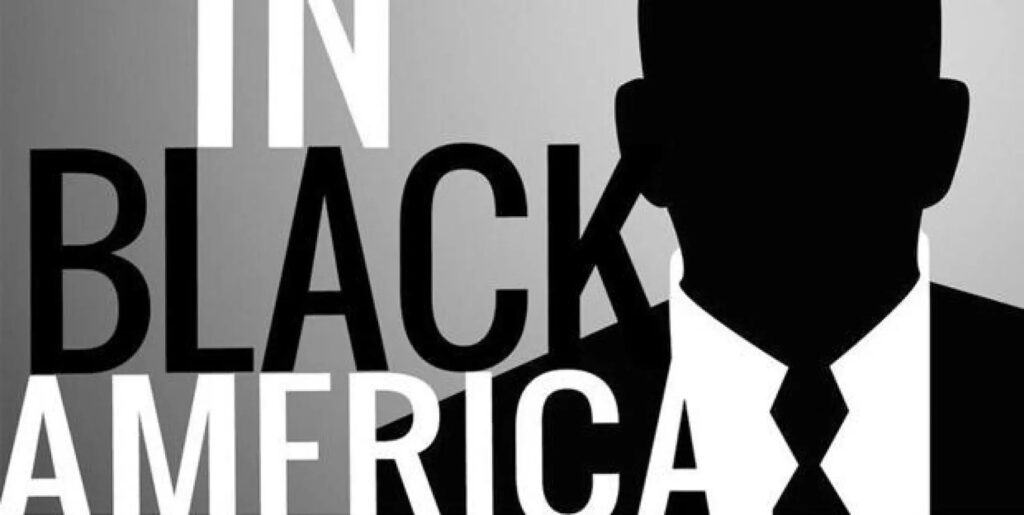
In late 2012, KUT’s long-coveted wish for a second frequency began to look like a reality. No more turf wars between music and news programming. Suddenly there was lots of programming real estate to fill. KUTX 98.9 would become an all-music service, and its program director Matt Reilly had an idea.
“I asked John to host [The Old School Dance Party],” Matt explains, “I had heard clips of his show from KUT in the ’70s, Soul on FM. I thought it would be a fun way to recognize a popular show from the past and give people a great entree into the weekend. I think it’s worked out”
Yeah.
Of course, this would mean a weekly Friday commute from Dallas, but just like John did when offered high school part-time work in Detroit, fluctuating daytime hours way out in Lockhart, or a stop-start nightly schedule at KUT, John didn’t hesitate. He was all-in. John E. Dee was returning to the airwaves, and Friday afternoons in Austin would never be quite the same.
You might think that a guy with such a persona, one that easily throws around terms like ‘Sugah Woogah’, might be a pretty frivolous person. But here’s the thing: he’s not. John is quick to smile and easy to laugh, but he’s as serious as can be about his work. All of it.
It’s all about the craft to John. Ask about his proudest moment at KUT/X, and you get a surprising answer.
“Believe it or not, Latino USA. The Mexican-American Experience had been a part of the Longhorn Network. When we first started talking about it, I couldn’t fathom being here in Texas of all states and [not having] a Hispanic presence on the radio. I went to Bill Giorda and [publicist] Yolanda Felton, who helped me navigate those waters to help bring Latino USA (a nationally syndicated program now in its third decade on air) on board.”
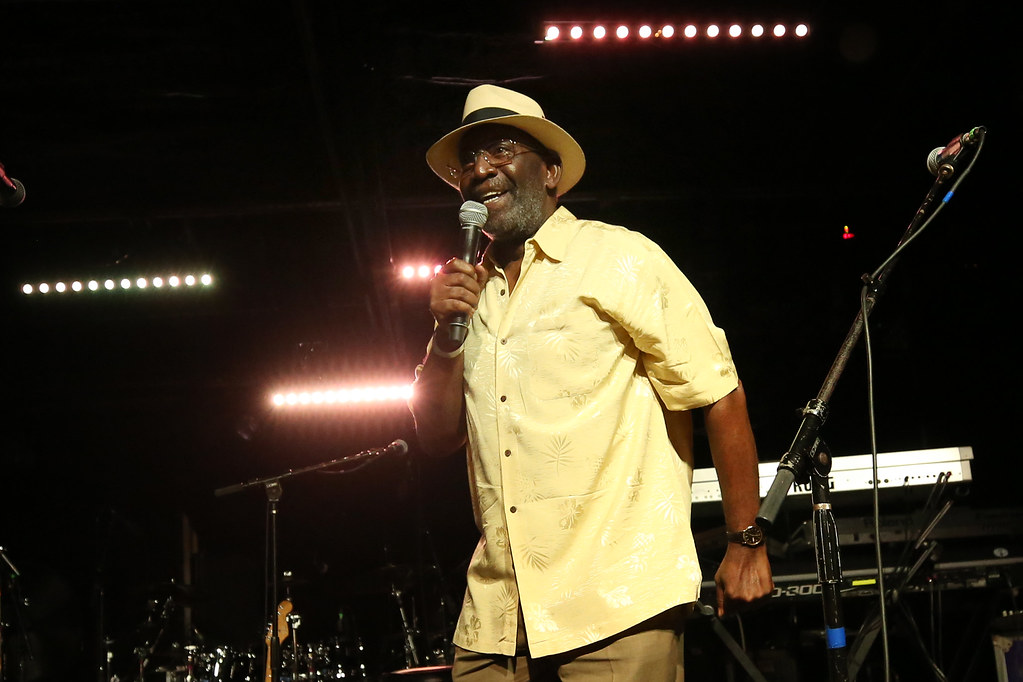
In Black America is a source of great pride for John as well, and rightly so. Its run and impact have been unprecedented. But with John now 73, I wonder aloud how much longer can he keep this up.
“This is the 43rd [year], you know, maybe two, three years. 45 would be two years from now. So maybe two, maybe three years. I’ll be 75 in two years.”
Vague and non-committal. In other words, he’s not going away anytime soon.
And John may have a serious attitude but there’s no denying it’s the music that has him hitting I-35 each Friday. Nothing makes him feel quite the same. It’s the feel of the seats in the Fox Theater, settling in to watch the young stars of Motown, the siren song of the radio in his parent’s kitchen. It’s being born in the right place at the right time, as great American music sprung up on the streets of his youth.
And on the radio. The radio, where clever, smooth-talking DJs transported him to another world. The very thing his parents thought would never work out. How could he not want to go back there?
Ten years into what John calls ‘The Old School Happy Feet Dance Party’, the ‘music that got you in trouble’ blares from the KUTX control room each Friday night. And just before seven, his lengthy send-off wraps up.
“I’m Everlovin’ and ALWAYS in parting, we wish you LOVE!” – (John is beaming, shouting above the ’Soul Train’ theme, rhythms pounding at top volume) -“PEACE!!” – “ANNND” (he waits, letting the pulsing music wash over him) – ”Good Night everybody!!!”
John might be hundreds of miles from where he started, but there is nowhere else he’d rather be.

